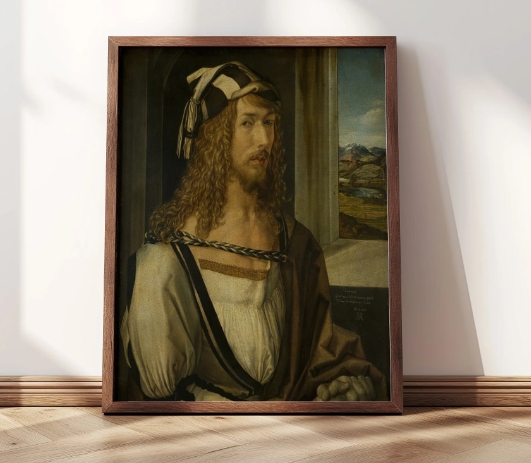Albrecht Durer was a master of self-portraiture, and his self-portrait from 1498 is a prime example of his genius.
Meticulous Details
In this self-portrait, Durer captures every detail of his appearance with astonishing precision. From the wrinkles on his brow to the hairs on his upper lip, every feature is rendered with meticulous care.
Intense Gaze
Durer’s piercing gaze in the portrait conveys a sense of self-assuredness and confidence. His eyes seem to follow the viewer wherever they go, creating a sense of intimacy and connection.
Symbolism
The portrait includes several symbolic elements that add layers of meaning to the work. Durer holds a thistle in his hand, which was a symbol of perseverance and resilience in the Renaissance period. The window in the background symbolizes the artist’s ability to capture the world around him in his art.
Technical Mastery
Durer’s skill as a draftsman is on full display in this self-portrait. The intricate cross-hatching and shading create a sense of depth and dimension that bring the portrait to life. The use of light and shadow adds a sense of drama and intensity to the work.
Legacy
Durer’s self-portrait from 1498 is a testament to his enduring legacy as one of the greatest artists of the Renaissance period. His ability to capture the essence of his own identity in this work is a testament to his skill as a portraitist.
In conclusion, Albrecht Durer’s self-portrait from 1498 is a masterpiece of the genre. Through his meticulous attention to detail, intense gaze, use of symbolism, and technical mastery, Durer unveils his genius as an artist.



